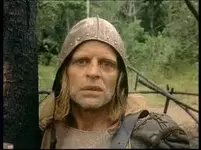Here's a reference to indians being enslaved.
During the expansion of French exploration and trade in western regions of the Mississippi and Missouri river tributaries, stories circulated about deposits of gold and silver in the territory of Western Louisiana. When these stories were printed in Paris newspapers, French politicians decided this was a good time to take action. They were glad to use this as a means of getting appropriations for expeditions to Western Louisiana. At that time, the French government was being ridiculed because Louisiana was considered a millstone around France's neck; millions of francs had been lost in efforts to develop the territory.
In 1716, after conferring with Sieur Hubert, an official in Louisiana, the French government sent Sr. Bernard de La Harpe on an expedition to explore present-day Colorado. Traveling from St. Louis up the Missouri River to where it turned northward, the expedition continued westward on today's Kansas River. Traveling a well-used trail (the latter-day Smoky Hill Trail along this river, the expedition turned into a fork coming from the northwest. (This trail actually had three branches. Each followed a stream that flowed into what is now called the Republican River, which emptied into the Kansas River. The streams were the North Fork of the Republican, the Middle Fork or Arikaree River, and the South Fork. In later years, the South Fork became the dominant trail.)
Upon reaching the headwaters of the stream (today's Arikaree River), La Harpe tells of how they continued westward, crossing several dry streambeds and then followed another Indian trail, Deer Trail Creek or Bijou Creek, into a valley where a river flowed northward. This was the South Platte River near Log Lane Village, or present-day Ft. Morgan, Colorado. A short time later, La Harpe’s scouts reported that there was a large camp of Padoucas up ahead. (The early French referred to most of the Indians in Colorado as "Padoucas" (Padokas) or "Laitanes." The Apaches were called "Canies.") As their party descended bluffs near the river, they saw a group of riders leaving the village and heading south, going up the river with carts drawn by oxen.
While trading with the Indians, La Harpe was told that the party they had seen leaving were Espagnol (Spanish) traders from Taos. The Padoucas (Cheyenne or Arapaho Indians) explained that they traded furs, meat, and vegetables for gold and silver earrings, bracelets, and medallions made by the Espagnols. La Harpe learned that the Espagnols mined great quantities of gold and silver in the mountains to the west. The party was also told of Indians being enslaved to work these mines.
Traveling up the Platte River to the location of present-day Denver, the expedition left the river, following today’s Cherry Creek to its headwaters. From there, they traveled southeastward to the Marne or Napesth (Arkansas) River, returning to the Fleur St. Louis River (Mississippi River). (La Harpe wasn’t sure if he was on the Arkansas River. Later, he led another expedition back up this river, which was called Napest by the Kiowa Apache Indians





